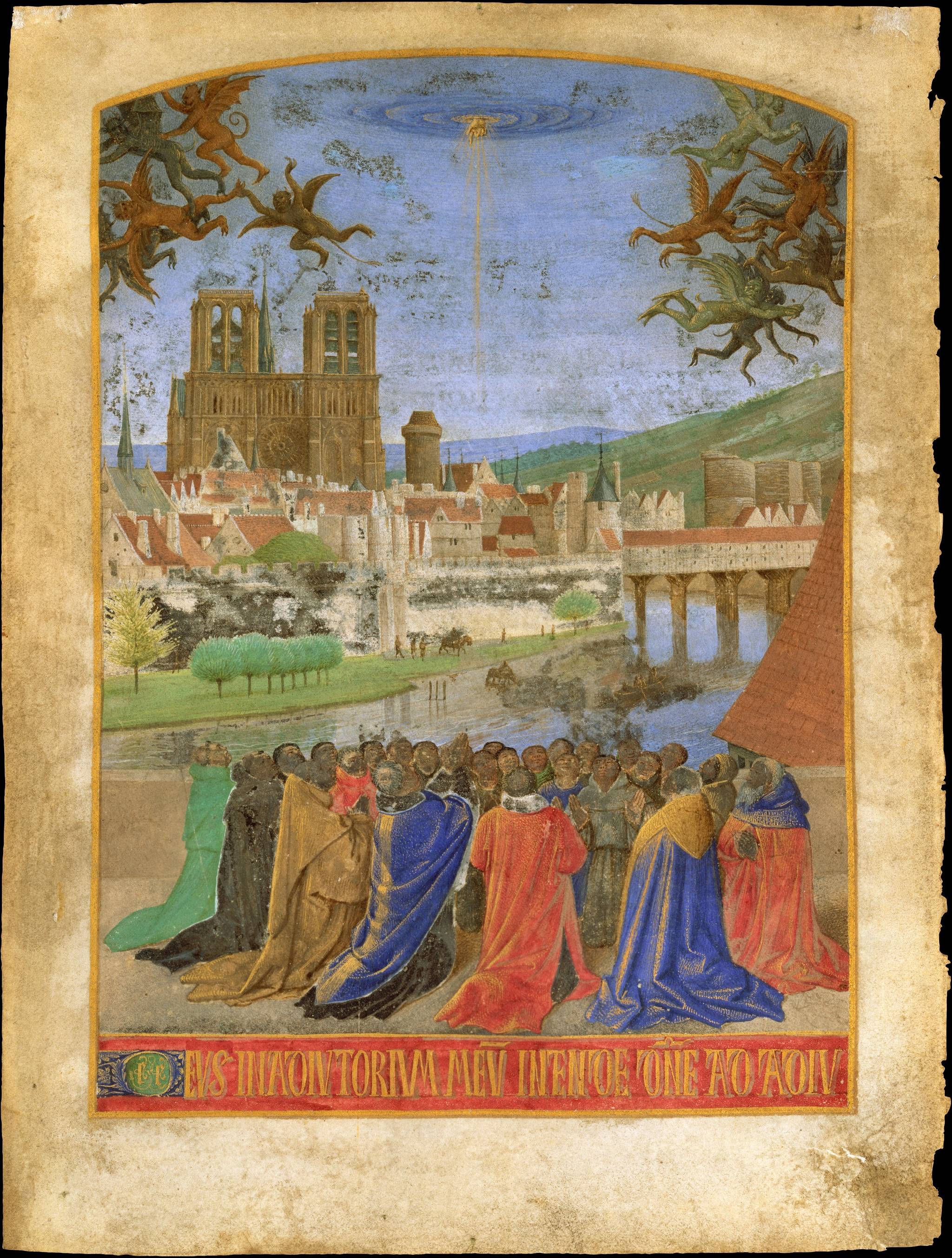My favorite approach to Notre Dame begins four kilometers northeast, in the working-class neighborhood of Ménilmontant. There Rue Oberkampf starts to slope gently downhill toward the river. At 6 a.m. you can walk Oberkampf in the dark and watch working Paris wake up around you.
At that hour, apartment windows are still dark — Parisians take their waking slow. The shops are dark too, except the bakeries, the bakers inside already busy at their art. A delivery truck rumbles down the narrow street. A lone bicyclist passes. On the sidewalk a shopkeeper chats with a driver. Oberkampf starts to pulse with the rhythms of those who live and work here, the Parisians who, more than any monument or museum, are the real attractions of Paris.
Then we cross over into the upscale Marais and zig-zag onto Rue des Archives, which brings us down to the Seine. Cafés start to open. Waiters set out the sidewalk seating — even in February.
If we’ve timed it just right, we will be crossing the cathedral’s parvis just as day breaks in the east beyond the towers. Time for a double espresso to help us contemplate the city around us and the meaning of Notre Dame, Paris’s spiritual heart.
My latest visits to Paris I’ve made some delightful acquaintances: Monic the public radio DJ who shares my taste for klezmer-tinged punk music; gracious Ben and Alexandra from Auberge des Artistes in Ménilmontant; lovely Rémi the consummate showman, who ends his rock band’s show by tap-dancing; Rabbi Tom and the folks at Kelihat Gesher; and Liisa the opera singer, whom I met through a Sitka friend I met at university in Washington. (Small world, right?)
Indeed, I first heard about the fire, as it was happening, in a text from Liisa, who was on the street nearby. My heart sank for her and the friends I’ve made there. Notre Dame is a critical inquiry, in the language of light and space, into the nature of spirituality, and its meaning must be found in how we define spirituality itself — but that requires some reflecting on the cathedral’s life among Parisians.
Hard to imagine, but Notre Dame’s parvis was once little more than a country churchyard. One 15th-century painting shows the cathedral rising above an island village set amid rolling hills just beyond the Seine. The image must have been anachronistic even then, as Paris was already a teeming international crossroads of commerce and the Humanities.
The modern city emerged. Each epoch placed its own demands on the cathedral. During the French Revolution, the cathedral became a symbol of oppression, and the only way it could satisfy Parisians’ spiritual hunger was by its defilement: revolutionary mobs vandalized whatever they could reach. Lamenting the twin effacements of disintegration and depredation, Victor Hugo wrote: “Time is blind, but men are stupid.”
(This past February, I sat in a small concert hall at Paris’s medieval museum surrounded by an eerie phalanx of giant stony heads those mobs had lopped off Notre Dame’s statues.)
“Spirituality is biography,” writes theologian Anthony Padovano. I think that’s right, but it’s not simply an individual’s biography. It’s something like socio-biography — the life we share, our connections to one another, the life of our sharing. Call it friendliness writ large: that’s spirituality. I don’t know how it could be otherwise.
In the wee hours of Thanksgiving night in 2017, wandering back to the apartment from a music club near Oberkampf, I took a long detour out of my way to see what the cathedral looked like at that time of night. I was crossing the empty parvis just as the flood lights illuminating the western façade shut off for the night, suddenly leaving Notre Dame to darkness and to me.
I sat down to appreciate the sleeping face of Our Lady of Paris and the city sleeping around us. I find the meaning of Notre Dame in the life — the lives — around it. Blind time and stupidity notwithstanding, this cathedral will survive in one form or another as long as Parisians and all the rest of us struggle to find a way to live together and be friends.
• Jim Hale is a member of Congregation Sukkat Shalom. “Living Growing” is a weekly column written by different authors and submitted by local clergy and spiritual leaders.

